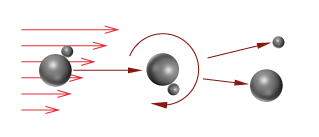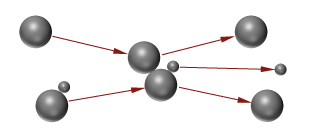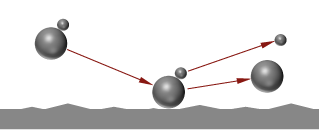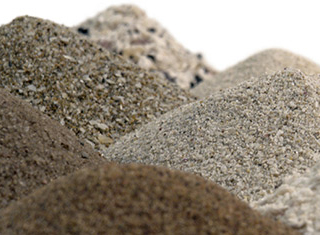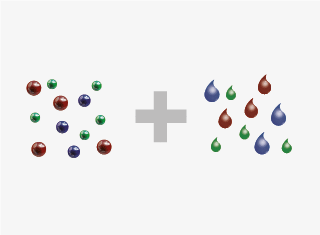Stationary bulk solids such as dry powder or granules (aggregate material) will partly form agglomerates with stronger or less strong bonds. The strength of these non-material bonds depends on particle size and the underlying attractive forces. Depending on material properties, surface condition, residual moisture and particle size, it may be Van der Waals forces, capillary forces, or electrostatic and magnetic forces of attraction for example that act in forming bonds. The basic rule is that the smaller the particles, the greater the tendency to bind.
For the most part, it is the physical properties of the individual particles (such as particle size or particle shape) and their distribution characteristics (frequency distribution and distribution density) that are of interest when characterising these dispersed systems. The purpose of dry dispersion is to overcome the binding forces between agglomerated particles, as well as optical dilution of the particle collective, in order to make them measurable by the sensor as individual particles at the appropriate concentration. To break up the agglomerate, energy input that can overcome the binding forces is needed. The stationary aggregate material is also set in motion in such a way that inertia forces such as gravity, inertia and centrifugal force, and surface forces from flow effects, can act against the binding forces. Dilution is mostly initiated via dosing, enabling even and continual distribution of individual particles in a larger volume of air.
Easily dispersible, i.e. typically coarsely dispersed, free-flowing products, are accelerated in the gravitational field in a freefall shaft. They can also be gently dispersed via particle-to-wall and random particle-to-particle collisions in a deflector plate cascade. This principle is implemented in the GRADIS gravitational disperser.
Finer particles with greater tendency to bind and stronger agglomerates need targeted, powerful input of dispersion forces. Even extreme binding forces between particles can be effectively overcome through the use of compressed air or other compressed gases in an injection disperser with a flow-optimised dispersing section. Speed gradients in the airflow, and particle-particle and particle-wall collisions combine to form a powerful triad. Agglomerates are completely broken up and the individual particles evenly distributed in a large volume of air as an aerosol. High accelerations of up to 100 m/s and a feed to the sensor in an aerosol free jet prevent the particles reagglomerating.
The principle of injection dispersion with compressed air and upstream dosing is our breakthrough innovation, and was first implemented in the early 1980s in the RODOS dry disperser. Our dispersion principle has been incorporated into the international standard for laser diffraction (ISO 13320) and now forms a basis for the characterisation of dry particles with laser diffraction and dynamic image analysis.












